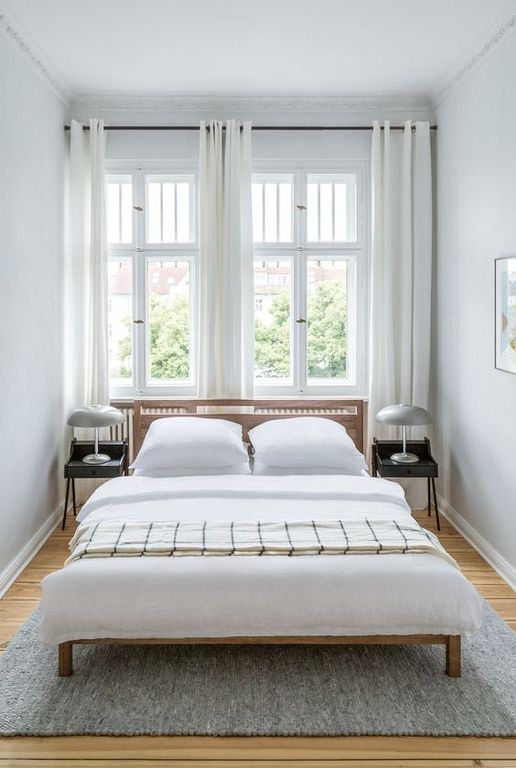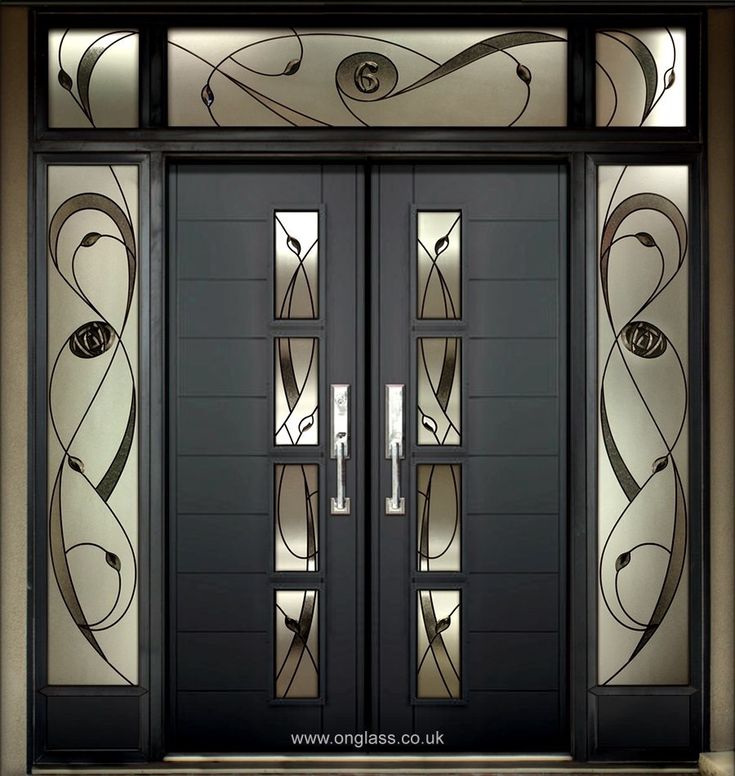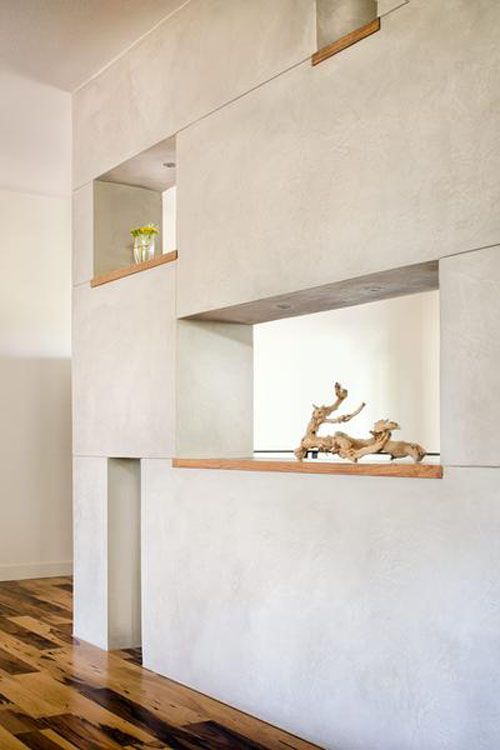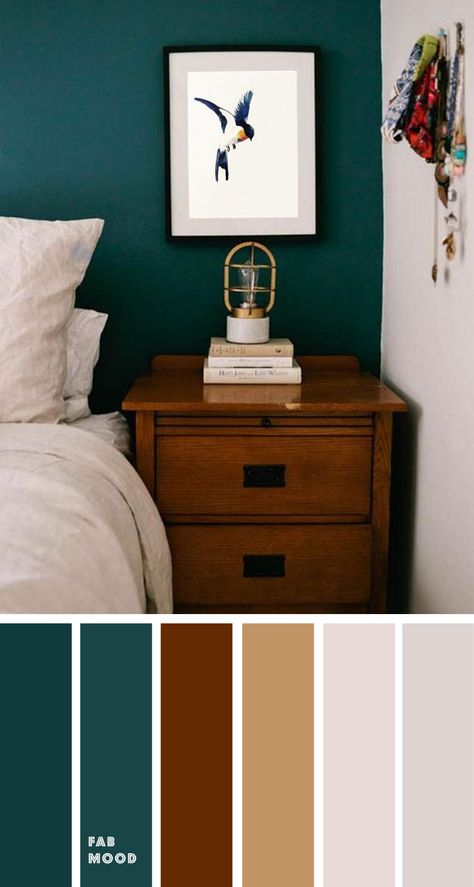How to pick a hardwood floor color
Choosing Wood Floor Colors: The 2023 Guide
This post may contain references or links to products from one or more partners of our parent company and/or subsidiaries of our parent company. For more information, visit this page.
December 30, 2022
If you’re reading up on wood floor colors, you’ve most likely narrowed your search down to one or two types of wood flooring for your home. And that’s good—because when it comes to hardwood floors, there are a lot of things to consider.
That’s why we’ve put together this comprehensive 2022 guide to wood floor colors: we want to make your life easier!
Below, we’ll explain exactly what you need to consider when choosing a floor color; we’ll debate the pros and cons of trendy colors vs. timeless styles; we’ll talk about the most popular wood floor colors of 2022; we’ll even clarify the difference between staining, finishing, and painting!
👉 If you simply want the top rated wood flooring brands, check out Proximity Mills, Doma and Paradiso.
But of course, picking a wood floor color is more art than science. What you think looks great might not be someone else’s cup of tea—and the color that your neighbor chose for their floors might not be ideal for yours (they have terrible taste, anyway).
So keep reading to learn how to choose wood floor colors that match your home, lifestyle, and personality!
We reviewed the 15 best hardwood floor brands and if you contact us, we are happy to answer any other questions you have!
Table of Contents
- 1 What to Consider When Choosing Wood Floor Colors
- 1.1 Choose a style that works with your existing aesthetics and color palette
- 1.2 But you don’t always want an exact color match!
- 1.3 Remember: dark wood floors can make small rooms look smaller
- 1.4 Pick complementary colors for rooms that can’t accommodate hardwood
- 1.5 Consider your lifestyle before picking a wood floor color
- 1.6 And think about your wood type as well
- 2 The Pros and Cons of Trendy Colors vs.
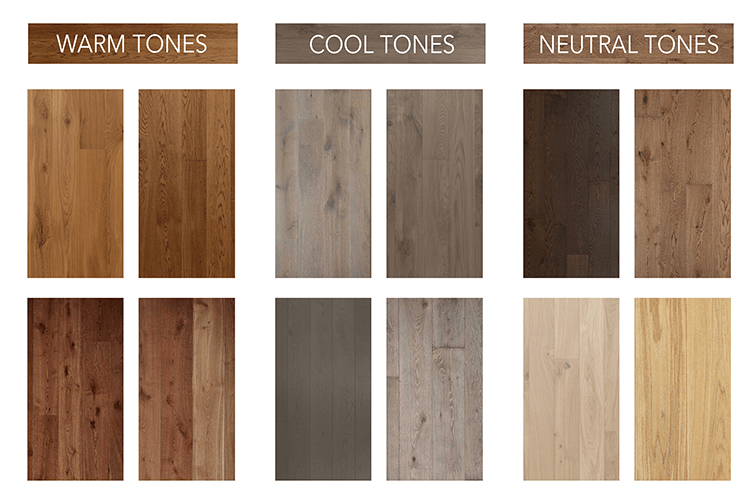 Timeless Styles
Timeless Styles- 2.1 Trendy colors will help sell a home in the near future
- 2.2 Classic looks can be an advantage for long-term resale value
- 2.3 Some types of wood offer a happy medium
- 3 The Most Popular Wood Floor Colors of 2022
- 3.1 50 Shades of Grey—the wood floors edition
- 3.2 Warm, earthy, and comforting
- 3.3 Au natural wood flooring is becoming popular as well
- 4 Staining, Finishing, & Painting: What’s the Difference?
- 4.1 Staining changes a wood floor’s color—and it’s quite common
- 4.2 Finishing a floor helps to seal and protect it
- 4.3 Painting wood floors may hide imperfections (but can also hide the grain)
- 5 Just Remember: the Only Person Who Needs to Love Your Wood Floor Colors Is You!
What to Consider When Choosing Wood Floor Colors
You may be debating between carpet or hardwood in the bedroom, or you might have decided to install wood floors throughout your home.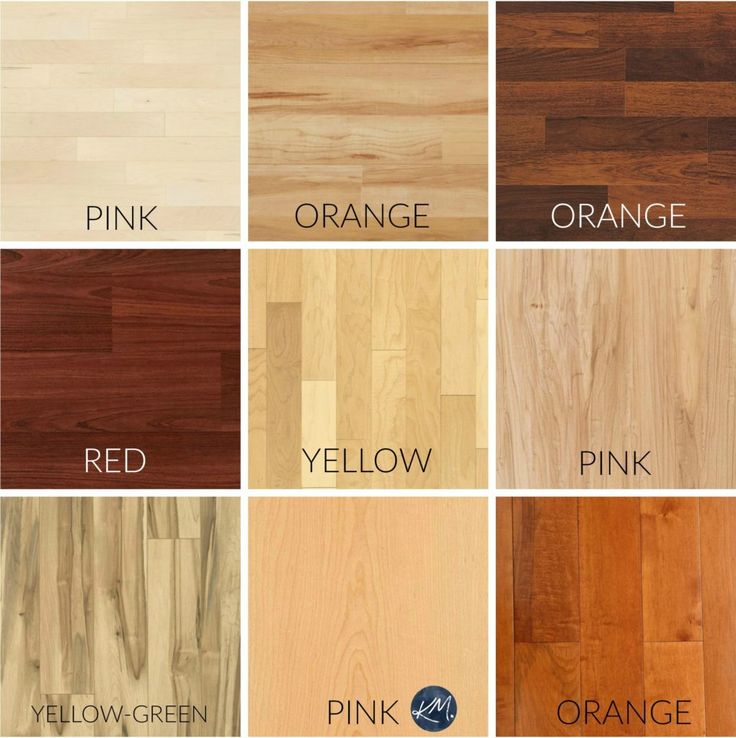 Either way, you’ll most likely want to stick to one color of wood, two at very most. And one style of carpet, if you want it.
Either way, you’ll most likely want to stick to one color of wood, two at very most. And one style of carpet, if you want it.
The goal is to give your home a cohesive look—not a random selection of floor choices, colors, and styles that change from room to room. Here’s what you need to consider:
Choose a style that works with your existing aesthetics and color palette
It goes without saying that the color of your wood floors should match your home’s existing aesthetics and color palette. That includes your wall and trim colors, cabinet colors, appliance colors, etc.—plus any furniture, rugs, or other types of flooring that you plan to keep.
For instance, if you happen to have dark cabinets, you’ll probably want to choose a wood floor color that contrasts yet complements the existing hues. The same can be said for furniture, countertops, and any other decor that you don’t want to change.
But you don’t always want an
exact color match!You might think it’s a great idea to match your floor’s color to your trim or cabinet color.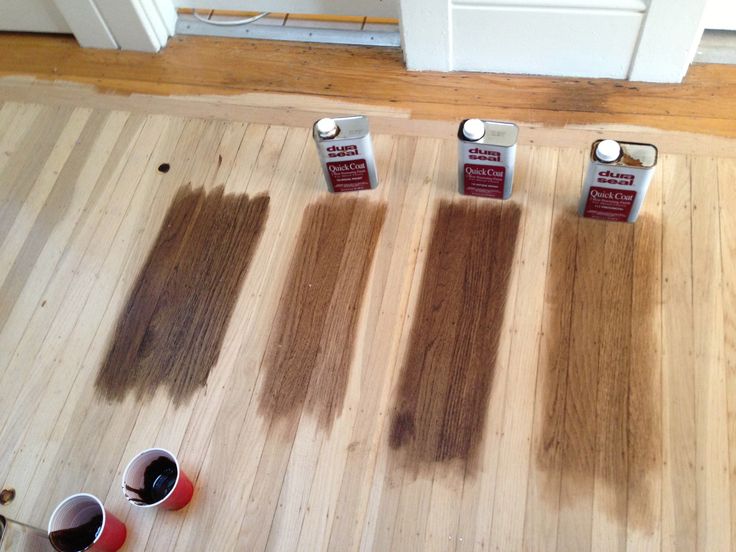 But this can backfire and make a room feel boring, flat, and like you have too much of the same material in one space. Instead, opt for something complementary rather than identical!
But this can backfire and make a room feel boring, flat, and like you have too much of the same material in one space. Instead, opt for something complementary rather than identical!
Remember: dark wood floors can make small rooms look smaller
You probably know that painting a small room a dark color can make it look even smaller. This is also true for small rooms with dark-colored wood floors! But there are some exceptions to this rule.
Using dark floors in a small room might not be a terrible choice if the area has a lot of natural light or light wall colors. Additionally, opting for wider planks or using other wood floor patterns can help minimize the shrinking effects of dark wood floors in small rooms.
Pick complementary colors for rooms that can’t accommodate hardwood
If you find yourself with certain rooms (like the kitchen or a bathroom) that can’t accommodate hardwood floors, pick a wood floor color that can easily be matched with other materials—different types of tile, vinyl plank, laminate, etc.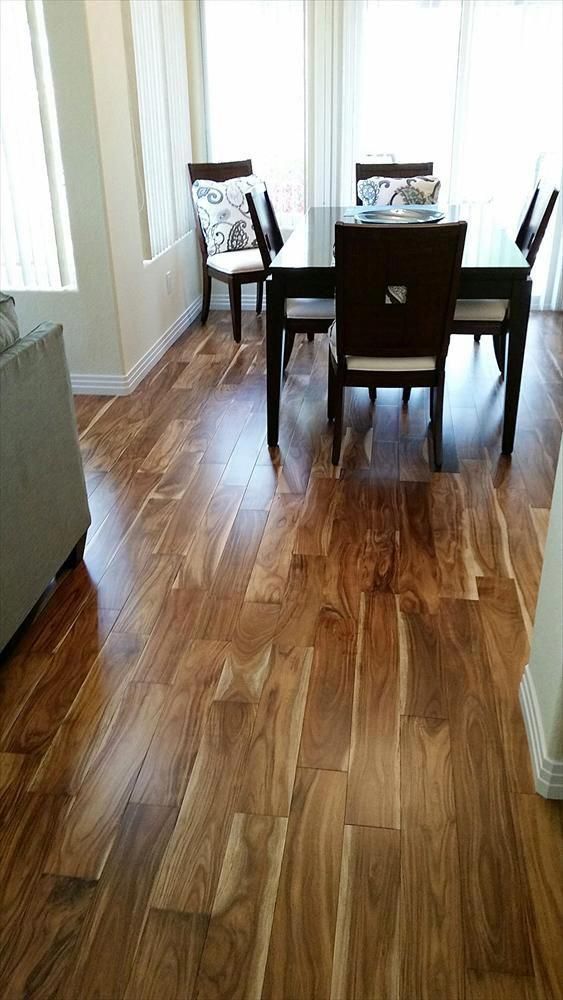
There are tons of great hardwood floor alternatives, and it’s important that you choose ones that complement your wood floors (and vice-versa). Insider tip: some of the best hardwood floor brands also make fake wood flooring—meaning you can occasionally find identical finishes across different materials!
Consider your lifestyle before picking a wood floor color
Dark wood floors tend to show scratches a bit more than their lighter counterparts. On the other hand, light wood floors might make you feel as though you constantly have to vacuum because they show dirt. Are you a regular cleaner? If so, a light floor might work great for you. Have children or dogs? Maybe a dark floor would be better for your lifestyle.
And think about your wood type as well
The most durable wood flooring options don’t scratch or dent as easily as, say, pine does (if you’ve looked into the pros and cons of pine flooring, you’ll know it’s quite soft). That means you won’t need a light finish to hide damage; you can go dark with comfort! The same is true for most types of scratch-resistant flooring.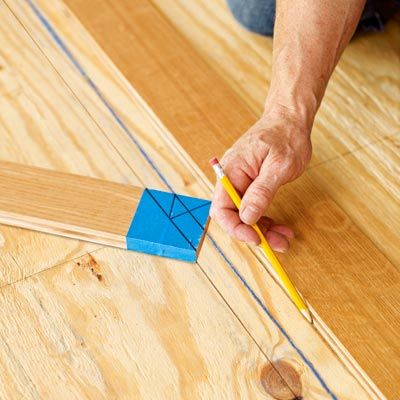
But on the other hand, pets and kids can drag in a lot of dirt and debris from outside. After all, the best wood flooring for dogs isn‘t just durable—it’s also able to hide imperfections and damage. And for that, lighter colors are ideal.
Think of it this way: if Fluffy the Cat is midnight black, you’ll be able to see her fur all over your light-colored floors. If you live in a rainy area, wet, muddy shoe prints will show up more often on dark surfaces, whether they’re made of water-resistant wood flooring or not. It’s all about balance!
The Pros and Cons of Trendy Colors vs. Timeless Styles
Whether you’re paying a professional to install the best engineered wood flooring you can buy, having your handyman pour concrete flooring that looks like wood, or if installing DIY wood floors on your own, your color and style choices are going to affect your floor’s immediate price and its resale value.
You might prefer a wood floor color that’s classic and timeless, or you might want flooring that’s trendy and modern. There are pros and cons to each style choice, but with a little research, you might find a wood floor color that’s a perfect compromise!
There are pros and cons to each style choice, but with a little research, you might find a wood floor color that’s a perfect compromise!
Trendy colors will help sell a home in the near future
Some people choose to install wood flooring as a way to update their home before they put it on the market. If this sounds like your plan, you might want to learn how to install hardwood floors to help increase your total ROI—and you also should consider choosing a trendy wood floor color.
Currently, popular wood floor colors include
- Dark charcoal to almost-black stains—super dark or light-colored wood floor can help your home feel quite modern.
- Natural-looking wood that’s finished with a strong lacquer.
- Mixed beige and grey tones. These colors, when paired with white/off-white cabinets and trim can help your home feel rustic while still remaining on-trend.
We’ll talk about these in more detail below, however.
Classic looks can be an advantage for long-term resale value
It’s hard to predict what styles and wood floor colors will be popular in years to come.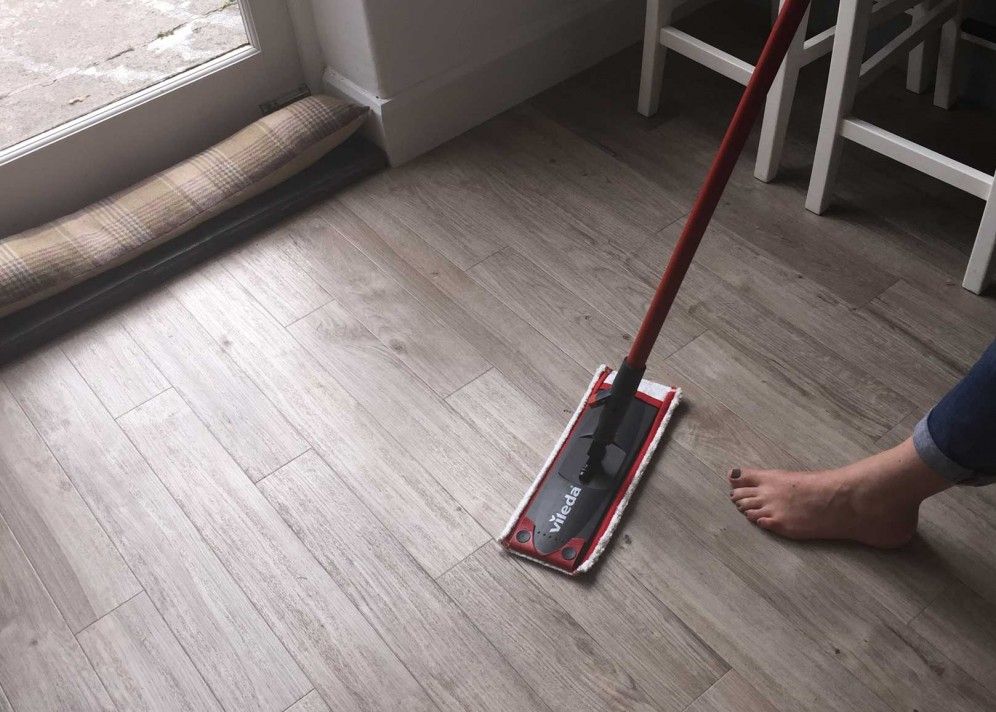 With this in mind, you might avoid hot trends and stick to the timeless look of warm, neutral browns.
With this in mind, you might avoid hot trends and stick to the timeless look of warm, neutral browns.
Almost all types of wood flooring will look great when you choose to stick with a shade of brown. You can also trust that it’ll match your interior and not be a turn-off to potential buyers if and when you decide to sell.
After all, the cost to replace carpet with hardwood—or simply put in a different wood floor—can be relatively high. Even the cost to install engineered hardwood floors is nothing to sneer at. The last thing you want to do is make an investment that doesn’t pay off when you put your house on the market.
Some types of wood offer a happy medium
Buying hardwood floors doesn’t mean that you have to choose between a trendy look or a classic one—you can usually find a color scheme that is perfectly in the middle.
One example is teak flooring. Teak wood is naturally gorgeous and doesn’t require any staining—which lends itself to a trendier, more modern look.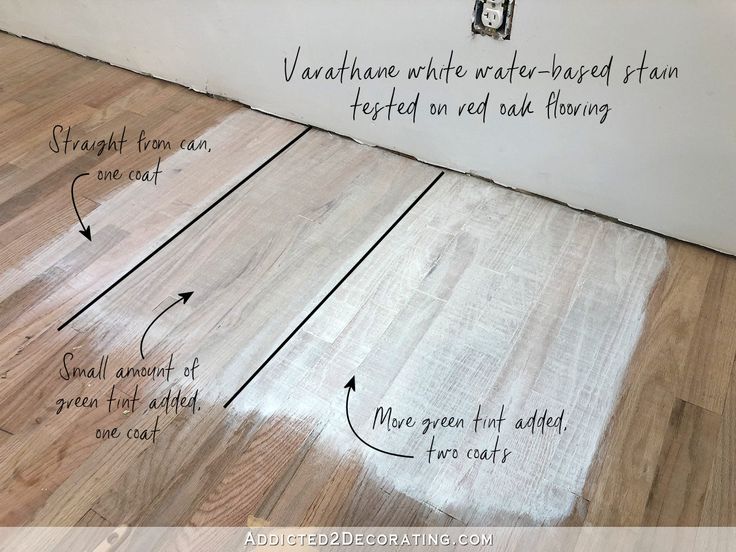 At the same time, teak wood offers warm, honey-like hues, giving these floors a timeless feel.
At the same time, teak wood offers warm, honey-like hues, giving these floors a timeless feel.
The Most Popular Wood Floor Colors of 2022
As we mentioned before, this year’s most popular colors range from near-black all the way to natural, unstained, lacquer. Along with the dark charcoal and near-black we talked about earlier, here are a few of the most popular 2022 wood floor color trends:
50 Shades of Grey—the wood floors edition
Grey is in, and not just on your bookshelf. These days, grey wood floors are more popular than ever. Plus, there’s a shade of grey to match almost any color scheme, decor, or personal preference:
- Vintage Driftwood, jasper grey, and cashmere grey are all light greys with cool undertones.
- Smoke grey, carbon grey, or a mixture of ebony and walnut stains are all excellent choices for dark grey wood floors with (mostly) cool undertones.
- You can choose to add a bit of brown stain to any grey stain to warm it up if that’s your preference.

There’s really no limit on the number of colors and stain mixtures you can come up with—you’re only limited by your imagination!
Warm, earthy, and comforting
Warm, earthy colors are a go-to for many people when it comes to their wood floors because they offer a classic look that won’t go out of style. And these days, the earthier, the better when it comes to popularity.
- Any stain labeled ‘Golden’ will offer a light, yet warmer tone for your floors.
- Stains that include wood species names are usually warm and earthy. Look for names that include species like pecan, oak, mahogany, chestnut, and cherry for gorgeous, natural-looking color options.
- Don’t avoid stains with the color red—they won’t be fire engine red, but instead will look more like an auburn hue.
Choosing an earthier color will look great in a home that already has a warmer color scheme. These colors also look fantastic when paired with stark white walls or when installed using intricate wood floor designs.
Au natural wood flooring is becoming popular as well
If you’re not a huge fan of super-dark floors, grey tones, or warm earthy neutrals, natural wood floors could be your answer. After all, you can always opt to let your wood’s natural beauty show, adding only a clear finish for protection. And of course, this is a great option for almost all types of wood flooring.
Staining, Finishing, & Painting: What’s the Difference?
As you search for hardwood floors, you’ll find that most come pre-finished. However, if you choose to install unfinished wood floors, staining, finishing, and painting may quickly become part of your vocabulary. While many people use these words interchangeably, here’s what they generally mean:
Staining changes a wood floor’s color—and it’s quite commonMost of the time, people choose to stain their hardwood floors in any of the color choices we mentioned above. Staining allows you to put pigment on your floors and mimic any type of wood you’d like, without spending huge sums on exotic woods.
Additionally, choosing to stain your wood floors allows you some flexibility when it comes to the overall aesthetic of your home. These days, many wood floors come pre-stained.
Finishing a floor helps to seal and protect itWhether or not you choose to stain your floors, you’ll want to use some type of finish on them. A wood finish can help protect your wood from any scratches, dings, and dents; it can also give your floors a glossy or matte appearance.
You’ll find that finished wood floors are far more resistant to water damage—making them better-suited for mudroom flooring, sunroom flooring, or other high-traffic areas.
Just remember that engineered wood flooring almost always comes pre-finished. We wouldn’t necessarily put that on the list of engineered wood disadvantages, but it can be annoying if you’re keen on finishing your own floors.
That said, engineered wood often comes as a click-together floating floor—making it one of the easiest types of flooring to install (just behind peel and stick carpet tiles). Again: there might be disadvantages of floating floors, but installation is not one of them.
Again: there might be disadvantages of floating floors, but installation is not one of them.
There’s one more option when it comes to wood floor color choices and it’s a simple one: paint!
Painting wood floors can be ideal to cover old, worn stain. It can also be perfect if you happen to want a color that’s outside of grey, brown, or natural-looking wood (think blues, greens, or purples!)
Keep in mind that choosing to paint your wood floor can help hide any imperfections but it will also hide most of the grain that gives it character. And of course, if worst comes to worst, you can always bleach wood floors to get out any particularly tough stains.
Just Remember: the Only Person Who Needs to Love Your Wood Floor Colors Is You!
The biggest thing to remember about wood floor colors is that your choice should ultimately make you happy! Yes, you can choose something that is on-trend, popular, or will retain your resale value, but if you hate the overall look, why bother?
So whether you’re choosing colors for a wood floor bathroom or doing your whole house at once, you are the only one your wood floors have to please!
Our advice: whenever you’re ready to start shopping in earnest, skip the box store BS and go straight to the source: a reputable, knowledgeable flooring store in your area. They can answer all your questions, help you find products you love, and show you how to find the best wood floor colors for your home.
They can answer all your questions, help you find products you love, and show you how to find the best wood floor colors for your home.
Still need some more information? Check out:
- The Best Types of Vinyl Flooring: Your Complete Guide
- Carpet vs. Laminate: The *Real* Pros & Cons
- Is the Cork Flooring Lowes Sells Actually Worth Buying?
- Tile vs. Laminate: The Pros and Cons
- Pergo Reviews 2022: What Buyers are Saying
- Engineered Bamboo Flooring: Pros and Cons
- Snap-Together Tile Flooring: Is It Right for You?
- What is Subflooring? Underlayment? We’ll Explain.
- What is Laminate Flooring: Laminate 101
- Heating Wood Floors 101: Everything You Need to Know
Choosing a Hardwood Floor Color (5 Easy Tips)
If you’ve decided to replace your carpet with hardwood flooring — congratulations! Not only will your home have a beautiful aesthetic but you’ll also increase your home’s value. In fact, you could add as much as 2. 5% value by adding hardwood. But, you have to do it right. This means choosing the right material, having expert installation, and selecting the best wood color. We’re going to walk you through how to choose the best wood floor color along with some tips for choosing the right material.
5% value by adding hardwood. But, you have to do it right. This means choosing the right material, having expert installation, and selecting the best wood color. We’re going to walk you through how to choose the best wood floor color along with some tips for choosing the right material.
Selecting the Material
Before you can choose the best wood floor color, you need to select the proper material. That includes its hardness. The Janka Hardness Scale rates wood’s hardness. As we explained in this blog, a wood’s hardness is determined by the amount of force needed to drive a .444 inch diameter steel ball to a depth of half the ball’s diameter.
The amount of force this takes, measured in pounds-force (ibf), becomes that species’ hardness rating. In simple terms, the higher the rating, the harder the floor. Strand-woven bamboo and eucalyptus are at the top, rated 4,000-5,000. Douglas Fir is at the bottom with 690.
Red Oak is the benchmark. It carries a rating of 1290, which means it balances durability with low maintenance.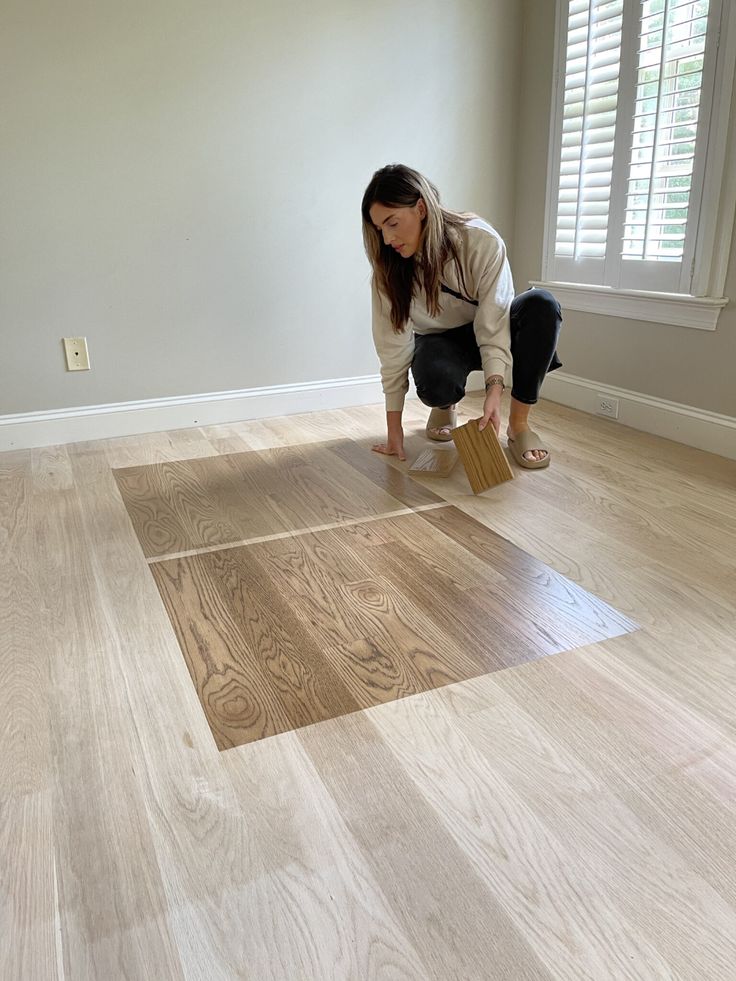 If you have small children or pets, you’ll want a harder wood. Keep in mind, harder isn’t always better. Harder materials are difficult to work with. In general, the installation cost is higher because it takes longer to drive nails and screws into it.
If you have small children or pets, you’ll want a harder wood. Keep in mind, harder isn’t always better. Harder materials are difficult to work with. In general, the installation cost is higher because it takes longer to drive nails and screws into it.
The material matters when you’re deciding on hardwood floor colors. For instance, bamboo tends to be darker while oaks are often lighter. Remember, how the wood is engineered, manufactured, and finished affects the hardness. But, these factors aren’t taken into consideration on the Janka Scale. Speak to a hardwood specialist about the different types of wood and their hardness before selecting a material.
Choosing the Best Hardwood Floor Color
Now that you know a little more about the hardness factor, you can start considering your future floor color. The size of the room and how much sunlight it gets matter.
Here are 5 tips to help you decide how to choose a hardwood floor color for your home.
- Install Light Colors in Small Rooms
- Dark Colors Add Sophistication
- Patterned Wood
- Consider the Sunlight
- Take Samples Home
1.
 Install Light Colors in Small Rooms
Install Light Colors in Small RoomsIf you’re installing custom woodwork in a smaller room, consider a lighter color. Light-colored wood floors will, in most cases, make the room appear larger. This is because it will make space seem open and airy. Two examples of this are beige or off-white hardwood. They’re also versatile when it comes to decorating the rest of the room. You can add lighter colors to your window treatments and decor or deflect sunlight. Or, you can add darker pieces for contrast.
2. Dark Colors Add Sophistication
In recent years, exotic woods and darker colors have become a trend. As mentioned, bamboo is an eco-friendly, exotic option that tends to be darker in color. Make no mistake, darker woods add sophistication and elegance. But, they’re not for every home. In many cases, darker floors make rooms look smaller. But, it’s very common to install it in the kitchen and bathrooms.
3. Patterned Wood
If you like the shabby-chic rustic look, patterned wood may be a fit for your home. Parquet is one type that’s been a mainstay in the category. The different shades complement many different styles and decor. But Parquet isn’t the only patterned wood. Reclaimed wood planks are also popular. These have a natural variance in their colors which leads to a richer texture. Some wood has darker knots than others. Hickory, Knotty Pine, and Mixed-Grain Cherry have a natural beauty because of their color variances.
Parquet is one type that’s been a mainstay in the category. The different shades complement many different styles and decor. But Parquet isn’t the only patterned wood. Reclaimed wood planks are also popular. These have a natural variance in their colors which leads to a richer texture. Some wood has darker knots than others. Hickory, Knotty Pine, and Mixed-Grain Cherry have a natural beauty because of their color variances.
Keep the Bigger Picture in Mind
If you do decide on a patterned wood, think of the big picture. While it may look rustic and have character in your living room or family room, it may be a little unsettling in a kitchen. You may think there’s a spill or stain when it’s only the wood’s natural color. This shouldn’t make or break your decision, but you should take it into consideration if you use softer lighting in your kitchen.
4. Consider the Sunlight
Natural light can change the appearance of wood flooring throughout the day. If you’re installing wood in a room with a lot of sunlight, it will look different in the daytime than it will at night. UV rays can also damage the wood over time. In some woods, it will bleach it while it can darken others. Make sure you ask your flooring specialist how sunlight will affect your wood. If your heart is set on a particular material and color, you can limit the sun’s exposure with window treatments.
UV rays can also damage the wood over time. In some woods, it will bleach it while it can darken others. Make sure you ask your flooring specialist how sunlight will affect your wood. If your heart is set on a particular material and color, you can limit the sun’s exposure with window treatments.
5. Take Samples Home
The only way you’ll know if you like a color — or don’t — is to take a sample home. Make sure you take samples of all the colors you’re considering. Set them up in the rooms you’ll install them in. For the first couple of days, keep them apart from each other. Then, bring them closer to compare side by side. Put them near your furniture so you can picture how it will look with your decor. Move them closer to windows and light sources, too. You’ll get an idea of how the sunlight affects the wood’s color throughout the day.
The Finishing Touches
After you select which material is best for your home, choosing the best wood floor color will be easier.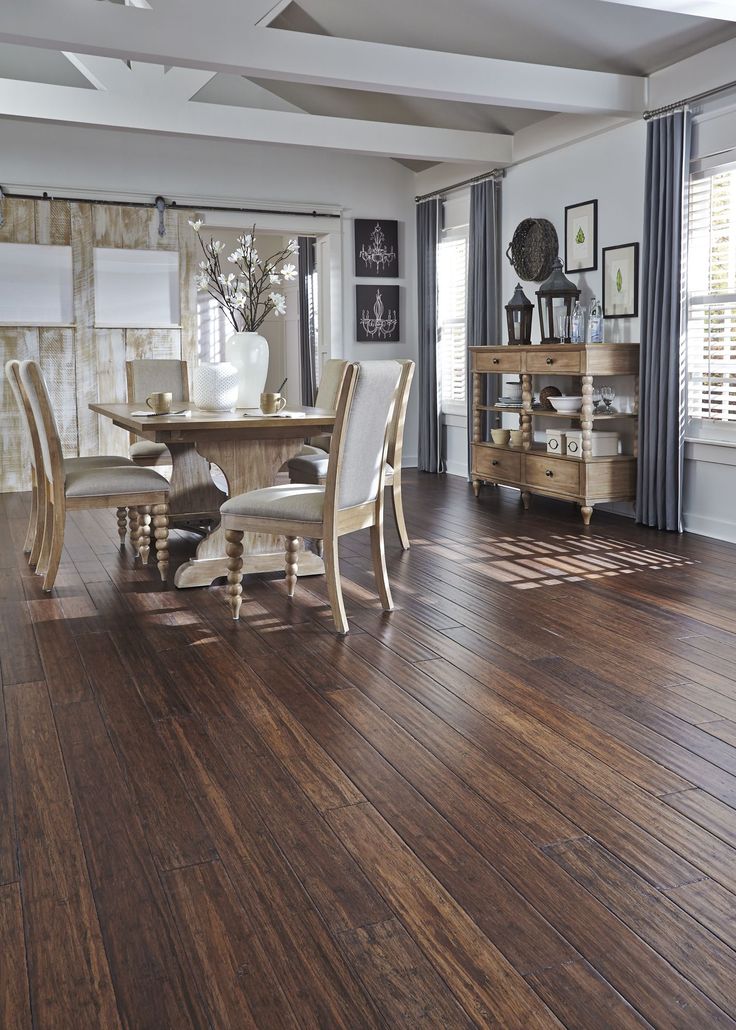 But, using samples to gauge your choices will take time. Don’t rush the decision! Hardwood is an investment that will last decades. You also shouldn’t trust just anyone with your investment. You need a professional installer that specializes in hardwood.
But, using samples to gauge your choices will take time. Don’t rush the decision! Hardwood is an investment that will last decades. You also shouldn’t trust just anyone with your investment. You need a professional installer that specializes in hardwood.
At District Floor Depot, we’re members of the National Wood Flooring Association. That means we hold ourselves to a higher standard than other flooring specialists. From start to finish, your flooring needs will be in the best hands. If you live in the DC area, contact us today to request a consultation.
How to choose the right color for parquet
Choosing the type of flooring isn't the whole story. An equally important decision is the choice of its color. How to choose the right parquet color to create a harmonious, stylish and cozy interior? We have collected recommendations from experienced designers to help you solve this difficult but exciting task.
Prioritize
The flooring market offers a wide range of parquet types, designs, finishes and colors.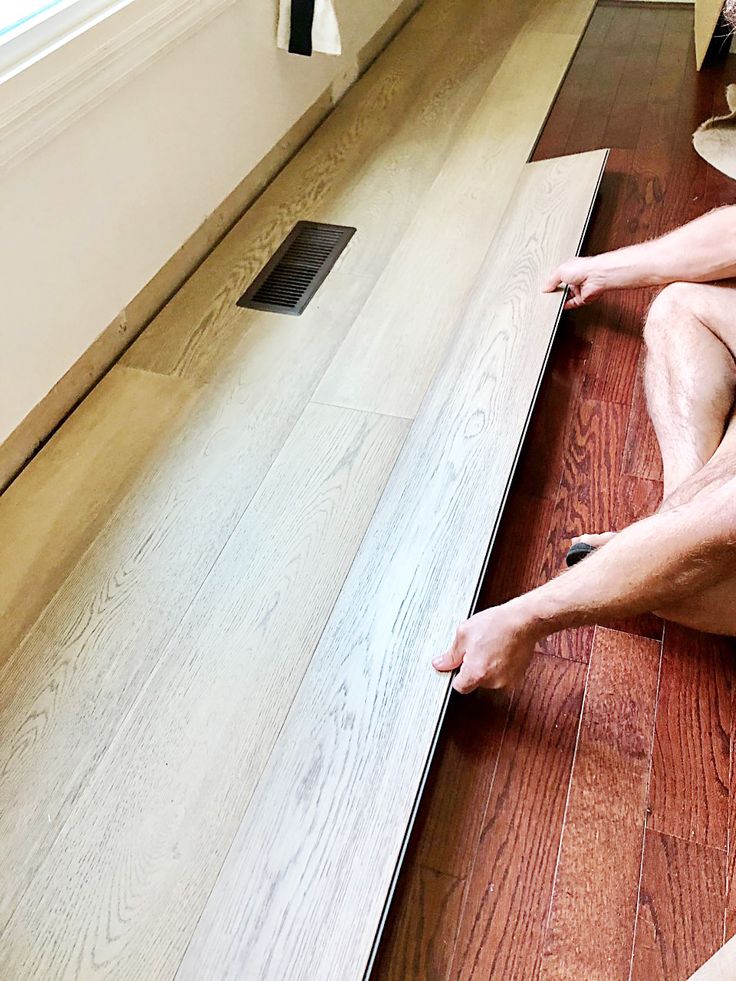 It's really hard to choose. And first of all, you need to answer the question: what is the most important thing for us in choosing a color? These can be favorite shades or colors that have been most harmoniously fit into the interior since childhood. Or maybe part of the ideal image of the space that we dream of seeing after the renovation.
It's really hard to choose. And first of all, you need to answer the question: what is the most important thing for us in choosing a color? These can be favorite shades or colors that have been most harmoniously fit into the interior since childhood. Or maybe part of the ideal image of the space that we dream of seeing after the renovation.
If you want to buy parquet in bright and spectacular colors, we advise you to pay attention to exotic species from manufacturers such as Ribadao, Missouri collection. Their natural beauty attracts admiring glances and does not even require special treatment. These are trees such as merbau, rosewood, mahogany, wenge, tiger tree, sapele, sucupira, kumaru and other rare species. Parquet made of such wood is expensive, but it fully justifies the high price with its luxurious look and durability.
Traditional species (oak, ash, maple, walnut, elm, birch and others) from Hain, Hajnowka, ESSE have a more restrained but noble beauty. The parquet made from these species embodies the naturalness and strength of nature in its natural color.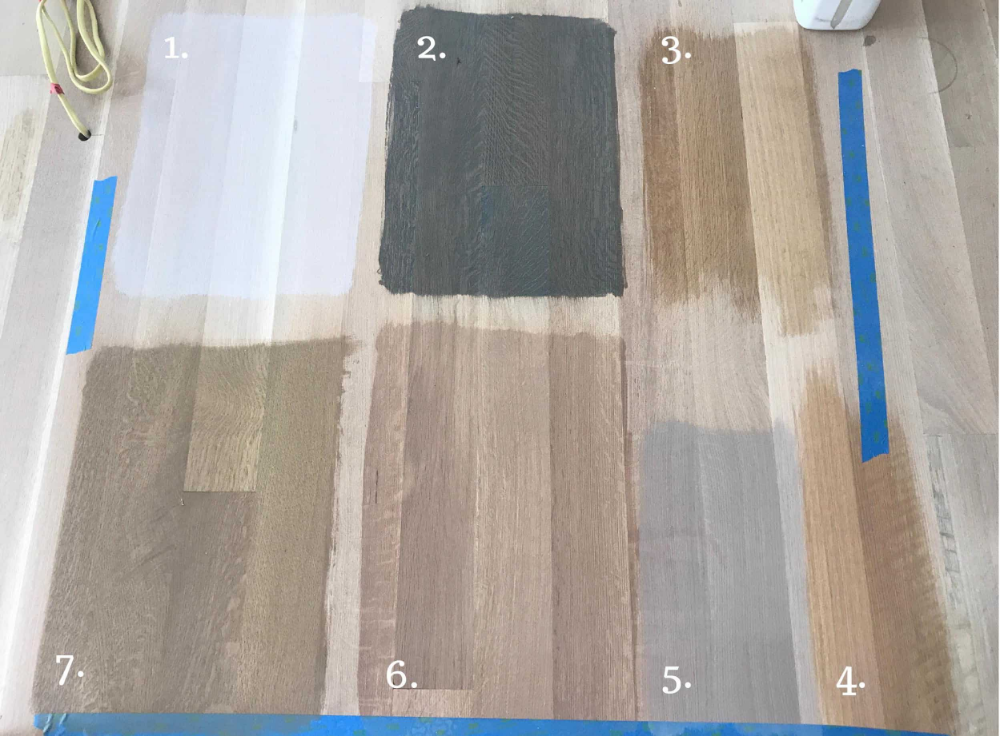 Many connoisseurs of natural materials even prefer classic breeds to bright and expensive exotic ones.
Many connoisseurs of natural materials even prefer classic breeds to bright and expensive exotic ones.
Decide what kind of interior you need, what you dream about. And then feel free to choose the color of the parquet to your liking.
Light or dark floor?
It would be a mistake to say that one of the two options, dark or light parquet, is better and more preferable than the other. This is wrong. Both of them are very beautiful in their own way. Which option is better to choose - the answer to this question, again, depends on personal taste and several other factors. If you think that choosing a color solely according to your taste is too subjective, we will try to find the right solution together.
Natural light tones are characteristic mainly of traditional woods. Oak has light brown wood, maple is very light, with golden and pinkish tints, ash is light brown with olive hues. Of the exotic trees, the olive tree, aformosia, melina and several other species are distinguished by light wood.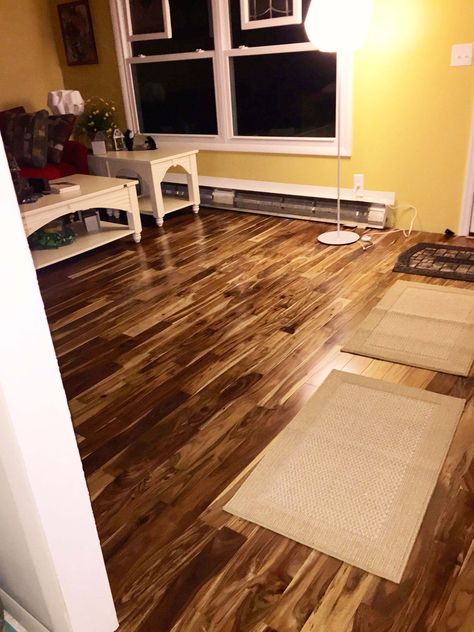 Much more often, tropical trees have rich dark and red hues.
Much more often, tropical trees have rich dark and red hues.
As for the advantages of dark and light parquet, let's consider them separately.
The light floor looks very elegant and helps to create a light and relaxed atmosphere in the house. Ideal for small rooms, as it visually expands the space, gives it volume and air. Such a floor is considered successful and correct according to the Eastern philosophy of Feng Shui. Designers recommend choosing light-colored parquet for a nursery or bedroom to fill the space with warmth and positive emotions.
Dark parquet has long been associated with aristocratic gloss. Perhaps precisely because most of the most expensive types of wood are characterized by natural dark shades: from red-brown, burgundy and purple to chocolate and almost black. This floor looks really luxurious. It will harmoniously fit into a spacious room with beautiful wooden furniture, antiques, paintings on the walls, author's decor. Dark parquet is suitable for a library, office, large living room and hall.
Another advantage of a dark floor is its practicality. Minor dirt and damage is not as noticeable on it as on light-colored parquet, which requires very careful maintenance.
For some parquet models, manufacturers completely change the natural color of the wood by painting. Unusual, bright colors are obtained that attract attention with their saturation, for example, blue, pink, green, turquoise, mint. Designers love to use such color schemes to create author's conceptual interiors. With the help of tinting and other types of decorative processing, the tree is given spectacular, fashionable shades. The bleached oak parquet is bright white. Dark shades of thermal wood look interesting and stylish. In addition, parquet made of this material lasts a very long time, since after heat treatment, the performance properties of wood are enhanced.
Color combinations in the interior
It is very important that the color of the parquet does not clash with the overall range of the interior, but, on the contrary, enhances the charm of all its shades.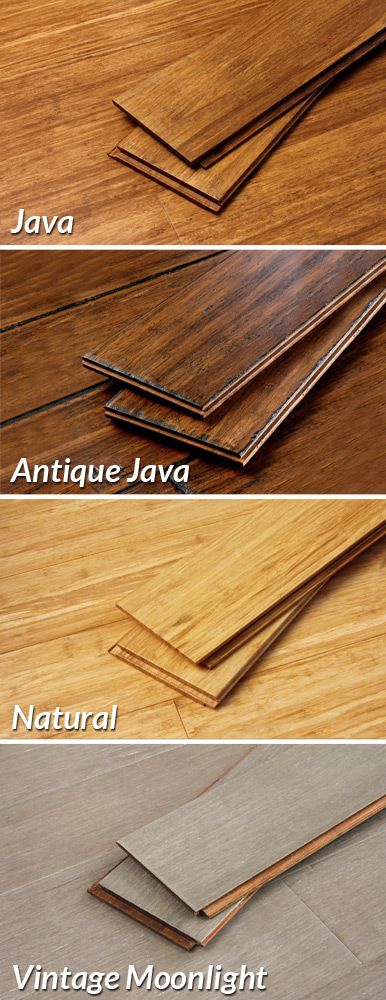 Natural wood tones go well with warm colors. The brighter the parquet itself, the more suitable it is for restrained, soft tones in the environment. Conversely, gray, light brown, walnut, silver and steel tones of parquet look great when surrounded by bright colors.
Natural wood tones go well with warm colors. The brighter the parquet itself, the more suitable it is for restrained, soft tones in the environment. Conversely, gray, light brown, walnut, silver and steel tones of parquet look great when surrounded by bright colors.
Interior style
Let's not forget about the style of the interior. Each direction has its own colors and shades. For example, in a classic interior or Provence style, the natural colors of traditional breeds look very good. Dark parquet harmoniously complements the baroque, romanticism, exotic, art deco atmosphere.
For country, vintage or loft interiors, oak parquet with a brushed effect, as well as bog oak, is suitable.
Recommendation: when choosing the color of the flooring, we do not recommend relying only on the photo. Actual shades of parquet may vary slightly. On our website you can order a consultation from our professional managers who will be happy to help you choose parquet by color and other important characteristics.
Parquet board color palette - Tarket Dom
Wood surface treatment methods
artificially aged package
- Brushing, which is also often called intentional aging. This effect is obtained due to the fact that the wood is treated with a special brush with thick bristles. The bristles knock out soft fibers and give the wood a more pronounced texture. Oak, wenge, walnut, merbau lend themselves best to this effect. A brushed board is always practical because it effectively hides scratches and dents.
- Wood bleaching. In this process, the color intensity of the wood is reduced by the use of bleaching solutions. Solutions of titanium peroxide, hydrogen, bleach and oxalic acid are used.
- Wood staining. The luxury of wood is achieved with the help of natural dyes. There are several ways to apply the staining solution: manual, spray, immersion and rolling method.
- Heat treatment of wood. High temperature, acting on a tree, changes its properties at the molecular level.
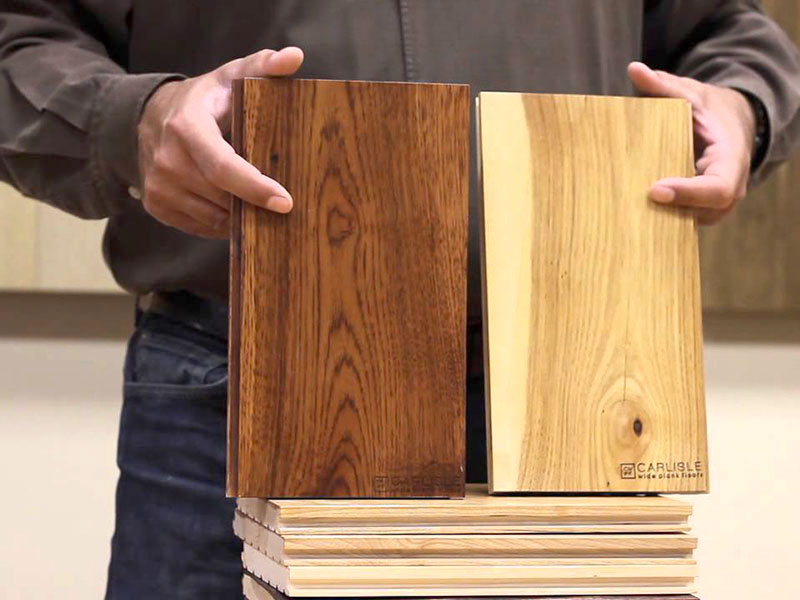 In this case, the wood is obtained with a uniform shade.
In this case, the wood is obtained with a uniform shade. - Planing. This process eliminates wood defects, and the surface is perfectly smooth.
Parquet colors
- Dark colour. You can achieve this color using bog oak or wenge wood. It is distinguished by a pronounced structure, harmonious coloring of the breed and pleasant outlines of annual rings.
- Brown color. In this case, walnut or exotic breeds are used, such as merbau, kumaru, sucupiru, lapacho. Moreover, each wood has its own beautiful fiber. The overall color ranges from light olive brown to deep brown. Annual rings are always pronounced.
- Pink color. A parquet board of this color is made from cherry, alder, pear, mahogany or dusia. Their wood naturally has a red-brown hue, which, after processing, acquires depth and saturation, starting to play in a new color.
- White color. A white parquet board is obtained by using oak, hornbeam, ash or bamboo. The floor of this color makes the room brighter and allows you to visually expand the space.
Parquet from such a board always looks festive and solemn.
- It is possible to obtain white color by treating ordinary oak boards with a special composition that changes the natural color of wood. After that, the top layer is covered with white oil. A white parquet floor looks like a matte white glaze that has a subtle ash tint. Due to the cream shade, the illusion of lightness and airiness of the floor is created and the perfection of its lines is emphasized.
- Yellow color. To create a parquet of this color, olive, teak, ash and flounder wood is used.
- Whiteboard. Demand for newly appeared whitewashed parquet boards is growing rapidly. In the manufacture of a bleached parquet board, and specifically its top layer, it is treated with a special composition that completely discolors the wood fibers. After that, it is covered with several layers of white varnish, and as a result, a perfectly white color is obtained without any shades.
bleached parquet board in the interior
How to choose the color of parquet board
In order to choose exactly the color you want, you must visit the showroom. Choosing the color of the parquet over the Internet or from a paper catalog will not give the desired result, since the photographs can be taken under lighting with different color temperatures, and monitors may not reproduce the color tone realistically.
It is better to come to the showroom during the day to see how the parquet will look in the sunlight. If you come in the evening, then most likely the lighting will already be on, which in most stores is cold fluorescent. If you use warm light lamps at home, then you will not be able to assess how the parquet will look like in your home.
When choosing a parquet board, it is best to draw up a range of tones. Even one batch of parquet will have a different shade, since the wood of the trunk of even one tree is slightly different in color. Exotic breeds are characterized by a sharper contrast of tones. In the case of a tinted parquet board, the difference in shades will be much less noticeable.
choice of parquet color
Practicality when choosing a color
Quite a common mistake made when buying a parquet board is ignoring the practicality of the decor.





